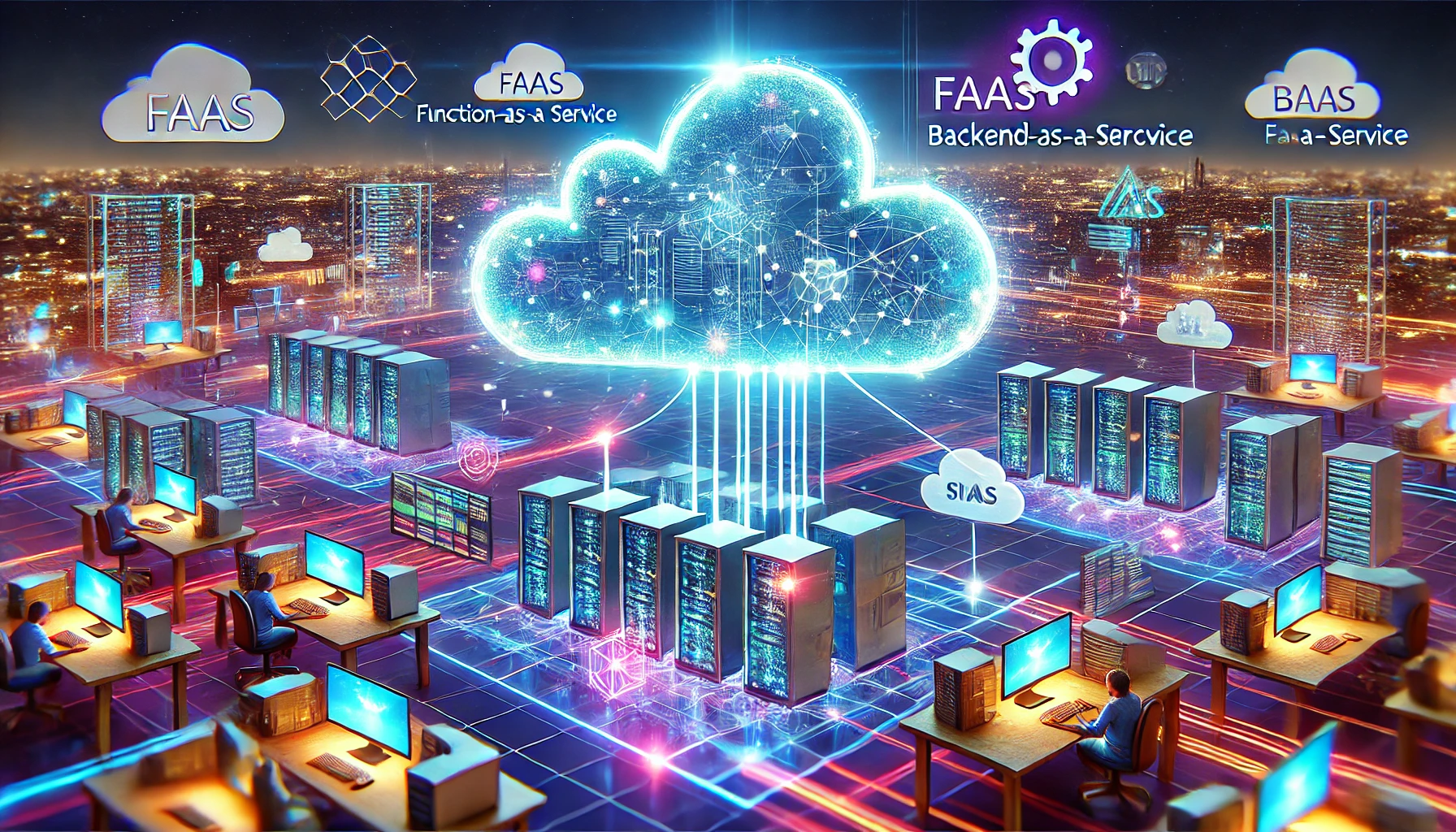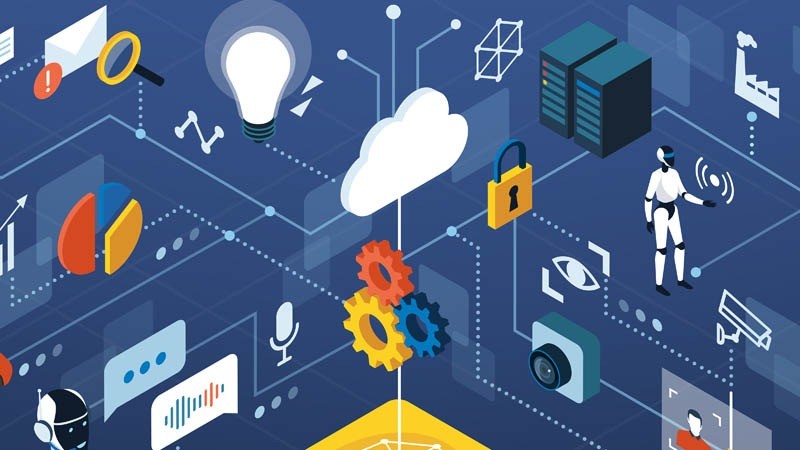The digital landscape is undergoing a profound transformation, and at the heart of this change is serverless computing. More than a mere buzzword, serverless represents a fundamental shift in how applications are developed, deployed, and scaled. It is an execution model where the cloud provider dynamically manages the server infrastructure, allowing developers to focus exclusively on writing code—the application’s core business logic.
This paradigm is rapidly moving from a novel concept to a foundational enterprise strategy. Market analysis projects the global serverless computing market to experience significant growth, soaring from an estimated USD 24.51 billion in 2024 to potentially USD 52.13 billion by 2030, reflecting a robust Compound Annual Growth Rate (CAGR) of 14.1%. This explosive trajectory is fueled by the corporate push for digital transformation, aggressive cloud adoption, and a compelling need for agile, cost-effective solutions.
To fully grasp the magnitude of this trend, one must delve into the definition, architecture, compelling business benefits, and the emerging trends that are charting its future course.
I. Understanding the Serverless Architecture
The term “serverless” is often misleading; servers are very much involved. The crucial distinction is that the responsibility for managing and provisioning these servers is entirely abstracted away from the developer and assumed by the cloud provider. This model contrasts sharply with traditional server-full or even container-based architectures, where operations teams must continuously manage virtual machines, patch operating systems, and handle capacity planning.
Serverless architecture is primarily composed of two key components, though the term often extends to various managed services:
A. Function-as-a-Service (FaaS): The Core of Serverless
FaaS is the most recognized form of serverless computing. It is an event-driven model where developers upload self-contained snippets of code, known as “functions,” that execute only when triggered by a specific event.
- What It Is: FaaS is a platform that allows for the execution of modular code pieces (functions) in the cloud. It is designed for short-lived, stateless computations.
- How It Works: A function remains dormant and consumes no resources until an event—such as an API call, a database change, or a file upload—activates it. Once triggered, the cloud platform instantly spins up the necessary compute environment, executes the code, and then tears down the environment.
- Primary Use Case: Ideal for microservices, data processing workflows, backend APIs, and real-time processing of streaming data.
B. Backend-as-a-Service (BaaS): Managed Backend Functionality
BaaS is an older concept often incorporated into the broader serverless umbrella. It provides ready-to-use, pre-built backend services that developers can directly integrate into their applications without writing server-side code for those specific functions.
- What It Is: BaaS offers a comprehensive suite of backend services, allowing developers to focus solely on the frontend (client-side) of an application.
- Key Services Provided: User authentication, database management, cloud storage, push notifications, and remote updates are all handled by the BaaS provider.
- Primary Use Case: Highly effective for mobile and web application development where common backend features are needed without the complexity of building them from scratch.
While FaaS is focused on running custom, event-triggered code, BaaS focuses on providing a full, managed backend stack. They are often used together to create a complete, highly-scalable serverless application.
II. The Undeniable Business Advantages
The widespread adoption of serverless computing is driven by its potent financial and operational benefits, which directly contribute to a higher return on investment and enhanced competitive agility.
A. Revolutionary Cost Efficiency
The serverless “pay-as-you-go” model is arguably its most compelling financial draw.
- Zero Idle Capacity Costs: Unlike traditional virtual machines (VMs), which incur costs even when idle, serverless functions only bill for the precise time the code is executing, often down to the millisecond. This eliminates spending on unused, provisioned capacity.
- Optimized Resource Utilization: Automated scaling ensures that resources perfectly match demand. During traffic surges, the platform scales up instantly. During quiet periods, it scales down to zero, ensuring maximum cost optimization.
B. Streamlined Operational Simplicity
Serverless removes the heavy burden of infrastructure management, freeing up valuable developer and DevOps time.
- No Server Management: Developers are completely relieved of tasks like server provisioning, patching, maintenance, operating system updates, and capacity planning. This abstraction dramatically reduces operational overhead.
- Focus on Core Logic: By offloading infrastructure concerns, development teams can dedicate their energy to innovation, writing differentiating application code, and focusing on business-critical features.
C. Accelerated Time-to-Market and Agility
The architectural design of serverless naturally leads to faster development cycles.
- Rapid Deployment: Deployment is simplified. Developers upload code, and the cloud provider handles the rest, significantly streamlining Continuous Integration/Continuous Deployment (CI/CD) pipelines.
- Automatic Scaling and Elasticity: The platform automatically manages scaling without manual intervention. This instant elasticity is vital for handling unpredictable, spiky workloads, ensuring consistent application performance under any load.
- Decoupled Architecture: FaaS promotes a microservices approach, where each function is an independent component. This modularity allows teams to update, iterate, and deploy individual components without affecting the entire application, boosting overall agility.
D. Enhanced Security and High Availability
While serverless introduces new security considerations, it inherently improves other aspects.
- Built-in Security Updates: Cloud providers automatically handle operating system and infrastructure security patching, reducing the attack surface related to server maintenance negligence.
- High Availability by Design: Serverless platforms are typically distributed across multiple availability zones within a region, providing high availability and fault tolerance without complex configuration by the user.
III. Navigating Serverless Challenges and Considerations
Despite its advantages, adopting serverless is not without complexities. Addressing these challenges is crucial for a successful long-term strategy.
A. Vendor Lock-In Concerns
- The Challenge: Serverless implementations often rely heavily on proprietary services, APIs, and frameworks unique to a single cloud provider (e.g., AWS Lambda, Azure Functions, Google Cloud Functions). This makes migrating the entire application to a different cloud provider a complex and costly effort.
- Mitigation: Enterprises are increasingly adopting multi-cloud or hybrid-cloud strategies. Utilizing open-source serverless frameworks (like Serverless Framework or Knative) that provide abstraction layers can help mitigate the risk of deep vendor lock-in.
B. “Cold Start” Latency
- The Challenge: When a serverless function is inactive for a period, its execution environment “cools down” and is decommissioned to save resources. The first time a cold function is invoked, the platform must re-initialize the entire environment, a process known as a “cold start.” This initialization adds a noticeable delay (latency) to the function’s response time.
- Mitigation: Strategies include choosing lighter execution runtimes, provisioning a minimum number of simultaneous containers (“provisioned concurrency”), and using periodic “warm-up” pings to keep the function active.
C. Monitoring and Debugging Complexity
- The Challenge: The distributed, event-driven nature of serverless makes traditional monitoring and debugging tools less effective. A single application request might trigger a complex chain of multiple, ephemeral functions, making it difficult to trace the flow and pinpoint errors.
- Mitigation: Developers must rely on robust centralized logging, advanced tracing tools, and application performance monitoring (APM) specific to serverless architectures to gain visibility into their distributed functions.
IV. Key Serverless Computing Trends Shaping the Future
The serverless ecosystem is dynamic, with several major trends poised to redefine its capabilities and adoption over the next few years.
A. The Rise of Stateful Serverless Computing
Traditionally, FaaS functions are stateless, requiring external databases to maintain application state. New advancements are tackling this limitation.
- Trend: Providers are introducing services that allow developers to build complex, multi-step workflows that maintain state between different function invocations.
- Impact: This enables serverless to handle more complex, transaction-intensive enterprise applications and long-running processes that were previously difficult to implement.
B. Integration with Edge Computing
Edge computing—processing data physically closer to the end-user or data source—is converging with serverless principles.
- Trend: Serverless functions are being deployed on edge networks and Content Delivery Networks (CDNs).
- Impact: This dramatically reduces latency for users globally, making serverless ideal for real-time applications, IoT device processing, and personalized content delivery, as data processing happens near the point of interaction.
C. Serverless for Artificial Intelligence (AI) and Machine Learning (ML)
AI/ML workloads, which require immense computational resources, are finding a natural fit in the serverless model.
- Trend: Serverless platforms are increasingly used to deploy ML inference models.
- Impact: The pay-per-use, automatic scaling nature of serverless is perfect for on-demand ML tasks like image recognition, natural language processing (NLP), and chatbots, where demand can spike unpredictably. Developers can run computationally intensive models without worrying about provisioning expensive, always-on GPU clusters.
D. Growth of Serverless DevOps and DevSecOps
The tooling and methodologies for deploying and securing serverless applications are rapidly maturing.
- Trend: Serverless-specific frameworks, built-in monitoring (observability), and automated security controls are becoming standard.
- Impact: This facilitates a true DevSecOps approach, where security and monitoring are integrated into the deployment pipeline from the start, enabling faster and safer deployment cycles.
E. Advanced Security Best Practices at the Function Level
As the attack surface shifts from the server to the function, security practices must evolve.
- Implement Least Privilege: Every function must be assigned only the absolute minimum permissions required for its specific task. This micro-segmentation contains the impact if a function is compromised.
- Employ API Gateways: API Gateways act as the primary security buffer, validating, encrypting, and authenticating all requests before they ever reach the underlying functions.
- Secure Application Dependencies: Regularly scan and update all third-party libraries and components used within a function to avoid vulnerabilities from outdated dependencies.
- Isolate Functions: Treating each function as a separate, isolated entity limits lateral movement by an attacker within the application architecture.
- Set Minimum Timeouts: Configuring functions with the lowest possible execution timeout helps mitigate the risk of Denial of Wallet (DoW) attacks, where an attacker intentionally runs functions indefinitely to inflate billing.

V. Conclusion: The Serverless Imperative
Serverless computing is more than an evolution; it is a fundamental pillar of modern cloud-native development. By abstracting the server, it has democratized access to scalable, cost-effective infrastructure, enabling organizations of all sizes to innovate at unprecedented speeds. The market’s aggressive growth projections validate that serverless is not a fleeting trend but an essential strategy for achieving operational excellence, optimizing costs through the meticulous pay-per-use model, and maintaining a competitive edge in a demanding digital marketplace.
Embracing this revolution requires developers and businesses to adapt focusing on event-driven design, adopting new security paradigms, and leveraging the growing suite of integrated services. As FaaS and BaaS solutions become more sophisticated, merging stateful capabilities with AI and edge computing, the serverless imperative will only intensify, making it the default choice for the next generation of application development.



